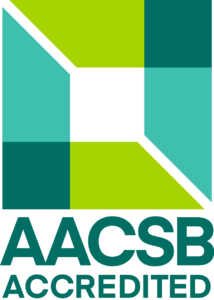Blockchain and Digital Currencies
- Credits: 3
- Ending: Examination
- Range: 0P + 2C
- Semester: summer
- Year: 1
- Faculty of Economic Informatics
Teachers
Included in study programs
Teaching results
After studying this course, students gain the knowledge and should be able to:
Knowledge
A. Know the conceptual apparatus related to blockchain, digital curencies and cryptoactive, whatis Blockchain technology and what is its use?
B. Know the definitions and technologies related to blockchain, which are blockchain applications
C. Know the differences between Blockchain and individual implementations of technology
D. Know blockchain browsers or other associated tools
E. Explain what cryptocurrency mining is, how it works, and what it is good for? What are the risksassociated with cryptoactive assets and how to prevent them?
Skills
F. Analyze cryptoactive and blockchain applications
G. Use blockchain applications
H. Manage and store cryptoactive (BTC - bitcoin, ETH - ether, ...)
Competences
I. Define the use of blockchain technology in other areas and applications
J. analytically evaluate individual implementations of blockchain technologies,
K. analytical evaluation of individual implementations in the context of legal and economic aspects,
L. use the skills needed in the design and implementation of blockchain technologies and cryptoactive.
Indicative content
1. Introduction to blockchain, digital curencies and cryptoactive - history, principles and definitions.
2. Bitcoin protocol
3. Ethereum protocol
4. Smart contracts
5. Alternative cryptoactive
6. Cryptomens in the context of macroeconomics
7. Second layer technologies - Lightning Network, Plasma, State Channels
8. Security aspects of blockchain
9. Alternative use of blockchain technology
10. Blockchain in Enterprise environment
11. Security aspects of cryptoactive from the user's point of view
12. Economic and legal aspects of cryptoactive and digital names
13. Decentralized Finance (DeFi), NFTs, and Metaverse in the Context of Cryptoactive
Support literature
1. Ammous, S. (2018). The Bitcoin standard: The decentralized alternative to central banking. John Wiley & Sons. ISBN 978 1119473862.
2. Tapscott, D., & Tapscott, A. (2018). Blockchain revolution: How the technology behind Bitcoin and other cryptocurrencies is changing the world. Portfolio/Penguin. ISBN 978 1101980149.
3. Antonopoulos, A. M. (2017). Mastering Bitcoin: Programming the open blockchain (2nd ed.). O’Reilly Media. ISBN 978 1491954386.
4. Antonopoulos, A. M., & Wood, G. (2019). Mastering Ethereum: Building smart contracts and DApps. O’Reilly Media. ISBN 978 1491971949.
5. Narayanan, A., Bonneau, J., Felten, E., Miller, A., & Goldfeder, S. (2016). Bitcoin and cryptocurrency technologies: A comprehensive introduction. Princeton University Press. ISBN 978 1400884155.
Syllabus
. Introduction to blockchain and digital currencies. History, basic principles of blockchain and cryptoassets. The emergence of Bitcoin and its importance in the context of trust in the digital space. 2. Bitcoin protocol. Technical architecture, proof-of-work, mining, consensus, limitations and impact on the economy. 3. Ethereum protocol. Smart contracts, Ethereum virtual machine (EVM), transition to proof-of-stake (The Merge). 4. Smart contracts. Concept, functioning, examples of implementation and use (DeFi, DAO, insurance). 5. Alternative cryptoassets. Altcoins (Litecoin, Monero, Cardano…), stablecoins, utility tokens and their use. 6. Cryptocurrencies and macroeconomics. Impact on monetary policy, CBDC, inflation and deflation models, regulation. 7. Second-layer technologies. Lightning Network, Plasma, State Channels – scaling solutions and their impacts. 8. Security aspects of blockchain. Cryptography, 51% attack, Sybil attacks, double spending problem. 9. Alternative uses of blockchain. Logistics, healthcare, voting, digital identity and data trust. 10. Blockchain in enterprise applications. Hyperledger, Corda, Enterprise Ethereum, private vs. public blockchains. 11. Security from the user's perspective. Wallets, seed phrases, hardware wallets, fraud and phishing. 12. Legal and economic aspects. Taxes, AML/KYC regulation, legal status of cryptoassets in the EU and worldwide. 13. DeFi, NFT and Metaverse. Concepts of decentralized finance, ownership of digital assets and their development.
Requirements to complete the course
Requirements to complete the course:
Continuous problem solving during exercises and activity 20%.
Final task 20%, 51% of this obligation is required for the exam. The following learning outcomes are assessed by the evaluation of projects: E., F., G., H., I., J., K., L.
Final exam - written form, 60% (passing the exam means obtaining at least 51% of the exam evaluation) The test verifies the achieved level of educational results A., B., C., D., E
Student workload
Total study load (in hours):
3 credits x 26 hours= 78 hours
Study load distribution:
Seminar participation: 26 hours
Preparation for seminars: 13 hours
Project preparation: 13 hours
Preparation for the final exam: 26 hours
Language whose command is required to complete the course
slovak
Date of approval: 04.03.2025
Date of the latest change: 06.11.2025

